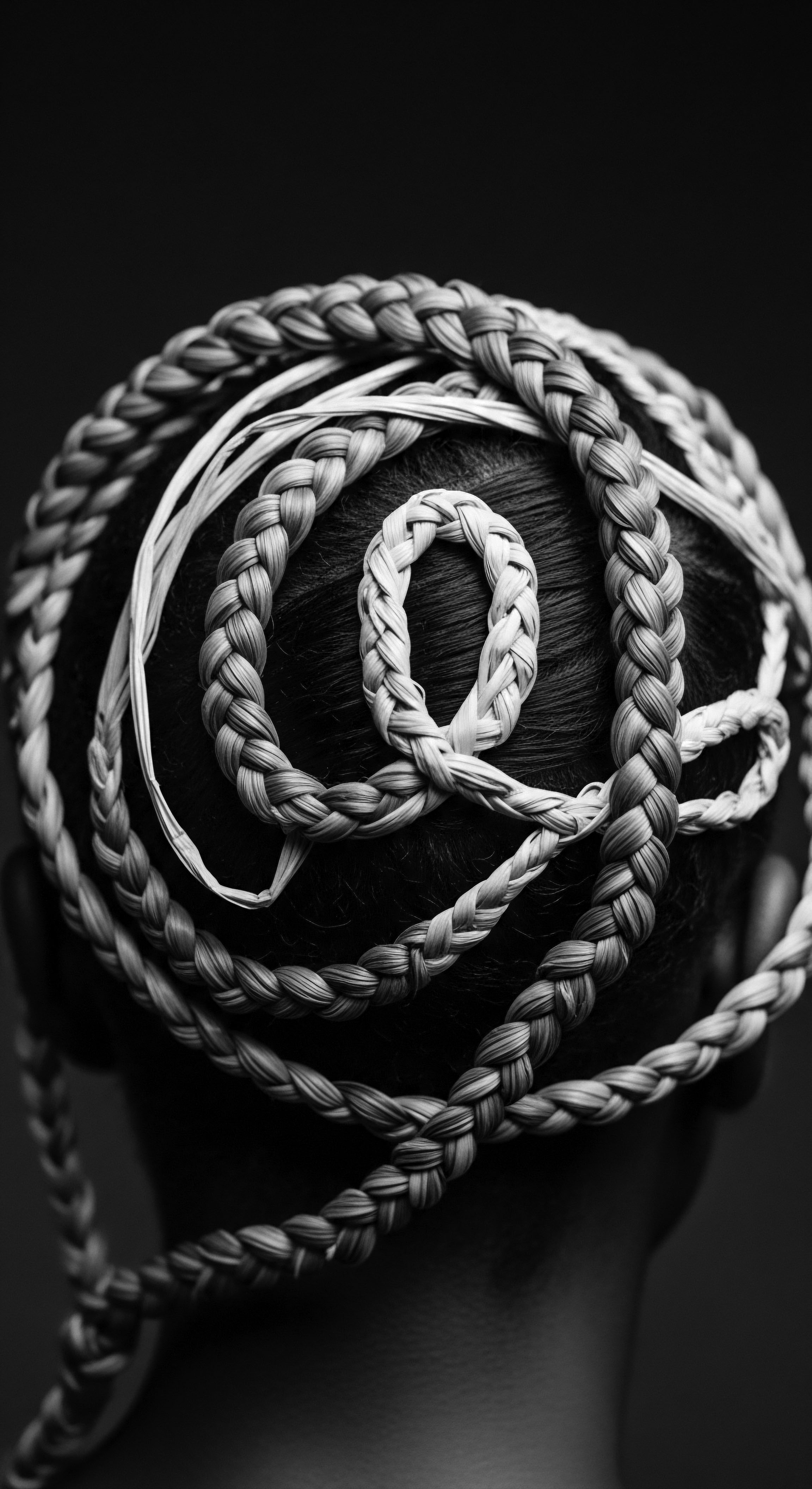
Roots
When we consider the individual helix, that singular strand which coils and turns, often in defiance of imposed notions of uniformity, we are truly gazing upon a profound continuum. It is a living artifact, a testament to journeys undertaken, wisdom gathered, and identities forged across generations. This is not simply about physical attributes; it touches upon an unbroken lineage, a deep conversation with those who came before us.
Textured hair, in its myriad forms, serves as a powerful conduit for personal affirmation and a tangible link to ancestral knowledge. The question is not whether this connection exists, but how its historical resonance continues to shape contemporary experiences.

Anatomy and Echoes
The very architecture of textured hair distinguishes itself with remarkable complexity, each curl, coil, and wave a unique expression of genetic heritage. From a scientific vantage, the follicular structure of highly coily or curly hair presents a distinct elliptical cross-section, quite unlike the more circular profile of straight strands. This elliptical shape, coupled with an uneven distribution of keratin proteins, creates differential tension along the hair shaft, compelling the strand to curve upon itself. The cuticle, the outer protective layer, lifts more readily at these bends, making textured hair inherently prone to dryness and breakage if not treated with understanding.
Yet, this very vulnerability, centuries ago, necessitated a profound sensitivity to its needs, a practical understanding that became codified into ancestral care practices. Our understanding now, validated by biomolecular studies, only amplifies the ancestral wisdom that intuitive care, rich in moisture and gentle handling, is paramount for the vitality of these spirals.
Beyond the microscopic, how did early communities categorize and identify hair patterns, predating modern numerical systems? Ancient African societies possessed nuanced terminologies for hair textures, often linking them to familial lines, spiritual beliefs, or social roles. These distinctions spoke to a reverence for diversity, acknowledging the breadth of hair forms within a community.
It was a lexicon of identity, where a specific curl pattern might indicate a particular lineage, or a coily texture might be associated with certain rites of passage. These classifications were organic, rooted in observation and the social fabric, contrasting sharply with later, more rigid systems born from colonial attempts to categorize and control.
The physical characteristics of textured hair are a biological blueprint of enduring heritage, inviting care practices shaped by centuries of ancestral wisdom.
The rhythm of hair growth, too, carries whispers from the past. Every strand progresses through stages ❉ anagen (growth), catagen (transition), and telogen (rest). For textured hair, particularly those patterns that coil tightly, the anagen phase tends to be shorter compared to straight hair. This can lead to slower apparent growth and limits the ultimate length achievable.
Ancestral communities, keenly aware of these natural rhythms, developed practices that optimized hair health within these biological parameters. Consider the traditional nutritional elements integral to many African diets—millet, sorghum, nutrient-dense greens—which provided the vitamins and minerals supporting hair follicle health. The external application of various plant-derived oils and butters, often infused with specific herbs, provided vital emollients and protective barriers, compensating for the hair’s natural propensity for moisture loss. This historical interaction between diet, environment, and external care speaks to an ancestral science, a wisdom passed down through observation and communal knowledge, that allowed textured hair to flourish, not merely survive.

A Genealogy of Strands
The origins of textured hair are interwoven with the very story of human migration out of Africa. As humanity spread across diverse climates, the variations in hair texture adapted, offering protective advantages. Coily hair, in particular, provided superior insulation against the sun’s intense ultraviolet radiation and helped regulate scalp temperature in hot climates, while also trapping a layer of moisture close to the skin.
This natural resilience, honed over millennia, speaks to an inherent strength, a testament to adaptability in the face of environmental demands. Understanding this evolutionary journey grounds the contemporary appreciation of textured hair not as an aesthetic choice, but as a biological triumph of lineage.
The specific language used to describe textured hair today often grapples with legacies of colonial influence. Systems like the Andre Walker Type System, while widely adopted for consumer convenience, were not born from the diverse lived experiences of textured hair communities themselves. They represent an attempt to simplify a spectrum of complexity into neat categories, sometimes obscuring the deeper cultural connections and inherent beauty. Examining how these systems differ from traditional, non-hierarchical ways of describing hair in ancestral contexts allows us to reclaim a vocabulary that honors diversity without judgment.
- Shea Butter ❉ A traditional emollient sourced from the karite tree, used for centuries across West Africa for its moisturizing and protective qualities for skin and hair.
- Chebe Powder ❉ A finely ground mixture of herbs from Chad, traditionally used by Basara women for hair strength and retention, often mixed with oils and applied as a paste.
- Aloe Vera ❉ Valued in various African and Indigenous cultures for its soothing and conditioning properties, applied topically to the scalp and hair.
The intrinsic link between textured hair and a sense of belonging is a theme that echoes across continents and generations. During the Transatlantic Slave Trade, a deliberate act of dehumanization involved the shaving of heads upon arrival, a violent severing of cultural identity and ancestral ties that hair had represented for generations. Yet, even in the face of such profound erasure, the ingenuity of those subjected to bondage manifested in extraordinary ways. In the nascent free communities, especially in places like Palenque de San Basilio in Colombia, founded by those who escaped enslavement, hair became a silent, yet potent, tool of resistance.
Women would style cornrows not only as a means of maintaining their cultural aesthetic but also, reputedly, to conceal seeds for planting crops in their new settlements, a quiet act of survival and self-sufficiency. More remarkably, these intricate patterns were also said to form literal maps of escape routes, or to convey messages about meeting points and directions, a covert language braided into their very being (Meadows, 2025). This practice transformed hair into a living archive of resilience, a testament to the profound connection between the body, ancestral ingenuity, and the pursuit of freedom. The hair, in essence, carried the past, shaped the present, and charted a path to a future.
| Aspect of Hair Follicle Shape |
| Ancestral Understanding (Heritage Lens) Recognized through observable curl pattern, intuitively linked to specific familial or community lineages. |
| Modern Scientific Insight Identified as elliptical or oval cross-section, dictating coil and curl formation due to differential keratinization. |
| Aspect of Hair Moisture Retention |
| Ancestral Understanding (Heritage Lens) Acknowledged through traditional practices of oiling and buttering hair regularly to prevent dryness. |
| Modern Scientific Insight Understood as a consequence of raised cuticles at bends, leading to increased water vapor transmission. |
| Aspect of Hair Growth Rate |
| Ancestral Understanding (Heritage Lens) Observed as slower apparent growth, leading to protective styling to retain length and minimize manipulation. |
| Modern Scientific Insight Correlated with a shorter anagen (growth) phase, impacting maximum achievable length and density. |
| Aspect of Hair The deep, intuitive knowledge of ancestral practices often aligns with current scientific discovery, reinforcing the value of inherited wisdom concerning textured hair's core characteristics. |
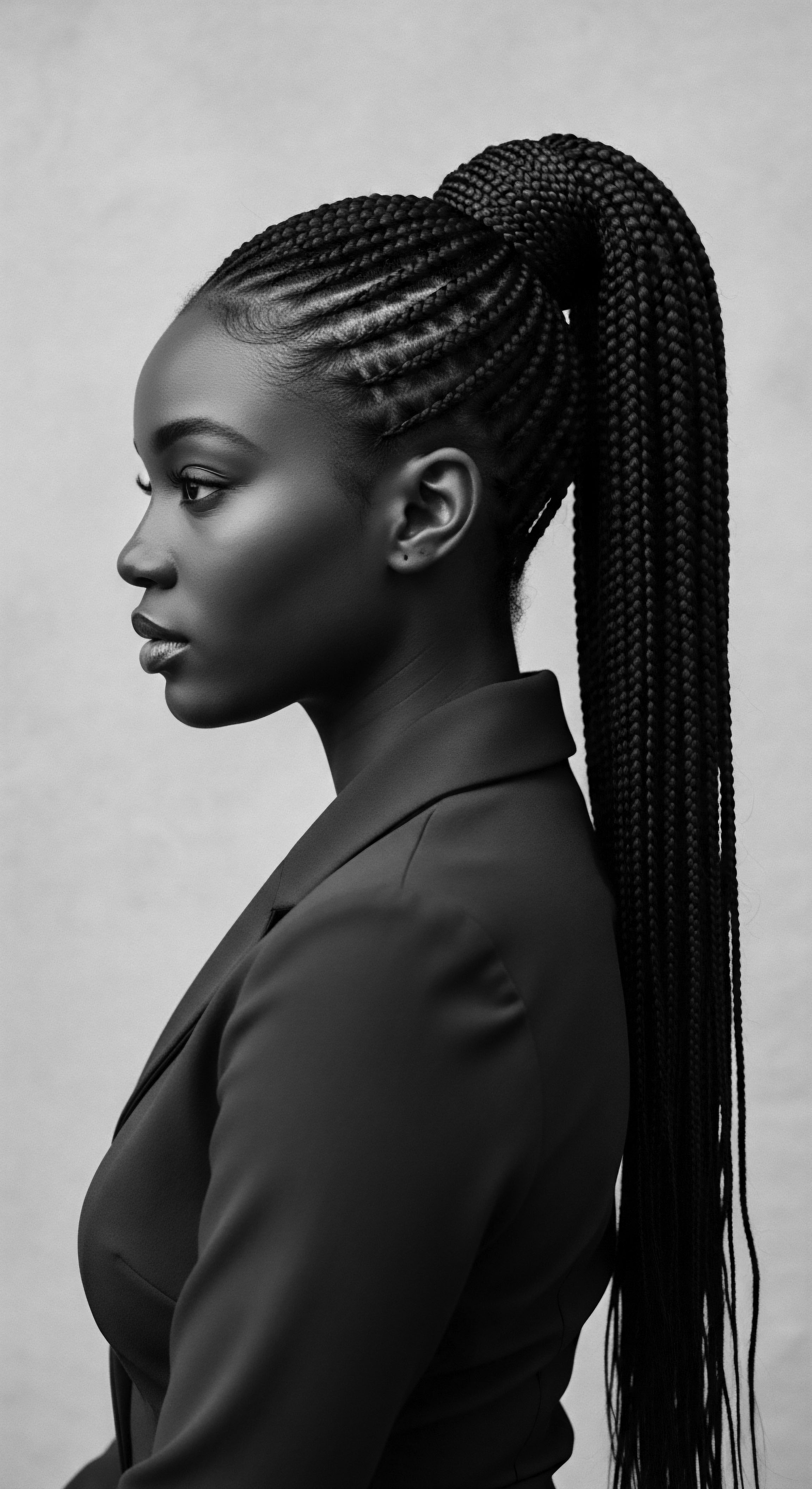
Ritual
The hands that tend to textured hair perform a ritual, a dance of care passed from one generation to the next. These are actions imbued with history, each stroke, each sectioning, each twist connecting us to a heritage of creativity and protection. Styling textured hair transcends mere aesthetics; it is a profound act of cultural preservation, a language expressed through strands, telling tales of resilience, identity, and shared purpose. From the oldest forms of braids and twists to contemporary sculptural styles, the continuum of textured hair styling is a testament to persistent innovation and enduring ancestral traditions.

Styling as Cultural Preservation
Traditional styling methods, rooted in diverse African societies, were far more than decorative. They served as vital markers of social standing, age, marital status, spiritual beliefs, and even tribal affiliation. For instance, in some West African cultures, specific braided patterns conveyed whether a woman was mourning, celebrating a harvest, or preparing for marriage. These styles were intricate visual codes, a form of non-verbal communication understood within the community.
The act of communal hair braiding, often taking hours, created spaces for intergenerational storytelling, for sharing wisdom, and for solidifying community bonds. It was within these circles, with fingers moving rhythmically through coils, that stories of lineage, lessons in resilience, and care practices were transmitted orally.
Consider the ubiquitous practice of Protective Styling, a bedrock of textured hair care. Braids, twists, and locs, far from being recent trends, have deep ancestral roots. These styles shield fragile ends, minimize manipulation, and promote length retention. In ancient Egypt, intricate braiding was commonplace for both men and women, often adorned with gold or beads, signifying status and devotion.
Across various African kingdoms, these styles were practical and deeply symbolic, ensuring the longevity of hair while communicating complex social information. The modern resurgence and celebration of these styles echo these historical functions, allowing us to honor our hair’s heritage while promoting its health.
Hair styling, for textured hair communities, stands as a living library of cultural narratives and ancestral ingenuity.
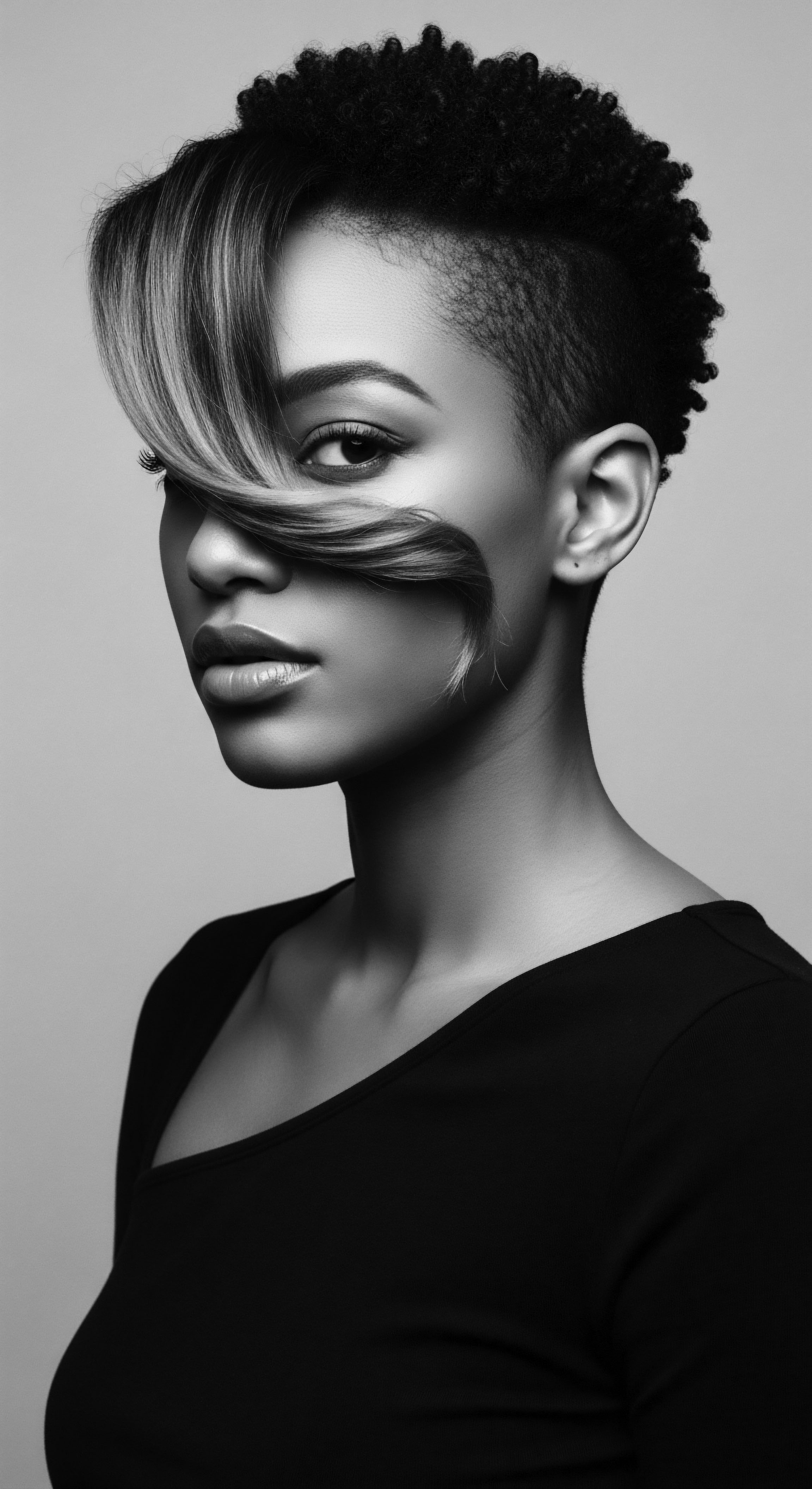
How do Traditional Styling Techniques Inform Modern Hair Artistry?
The foundational principles of traditional hair manipulation continue to guide contemporary styling. The technique of sectioning hair precisely, ensuring even tension, and working with the natural direction of the curl are lessons inherited from generations of skilled hands. Even the modern twist-out or braid-out, techniques favored for defining natural curl patterns, are contemporary iterations of methods used for centuries to elongate and shape textured hair. The meticulous care involved in creating a cornrow, the precision of a Bantu knot, or the dedication required for loc cultivation are practices steeped in a reverence for hair as a sacred extension of self.
The tools of hair care also speak to this continuum. While today we have a range of specialized combs and brushes, ancestral tools were often crafted from natural materials—wood, bone, or horn—designed to gently detangle and sculpt the hair without causing undue stress. The rhythmic sound of a wide-tooth comb moving through damp coils carries the echo of ancestral implements, reminding us of the deliberate, patient approach required for this hair type.
- Fingers ❉ The original and often most gentle tools for detangling, coiling, and sectioning hair, emphasizing minimal stress.
- Wooden Combs ❉ Historically used across Africa for detangling and smoothing, often carved with symbolic motifs.
- Gourds ❉ Utilized in some communities to hold water or mixes for cleansing and conditioning, demonstrating resourcefulness.

The Significance of Adornment
The practice of adorning textured hair with cowrie shells, beads, metals, or fabric is a practice with profound cultural and spiritual resonance. These embellishments were not merely decorative; they held symbolic meaning, often representing wealth, spiritual protection, or rites of passage. For instance, specific cowrie shell placements could denote fertility or prosperity in certain communities.
The artistry involved in these adornments reflects a deep appreciation for hair as a canvas for cultural expression, a direct link to the aesthetics and belief systems of forebears. The way hair was adorned could tell a story without a single word being spoken.
Even the cultural journey of wigs and hair extensions, often viewed through a modern lens, has historical roots that extend beyond contemporary fashion. In ancient Egypt, elaborate wigs served as status symbols and protective head coverings. In West Africa, certain hairpieces were incorporated into ceremonial dress, signifying spiritual power or royalty. While the materials and accessibility have changed, the fundamental impulse to alter or enhance one’s appearance through hair, or to protect natural hair beneath an outer layer, carries an ancestral echo, connecting present-day choices to a rich historical tapestry of self-presentation.
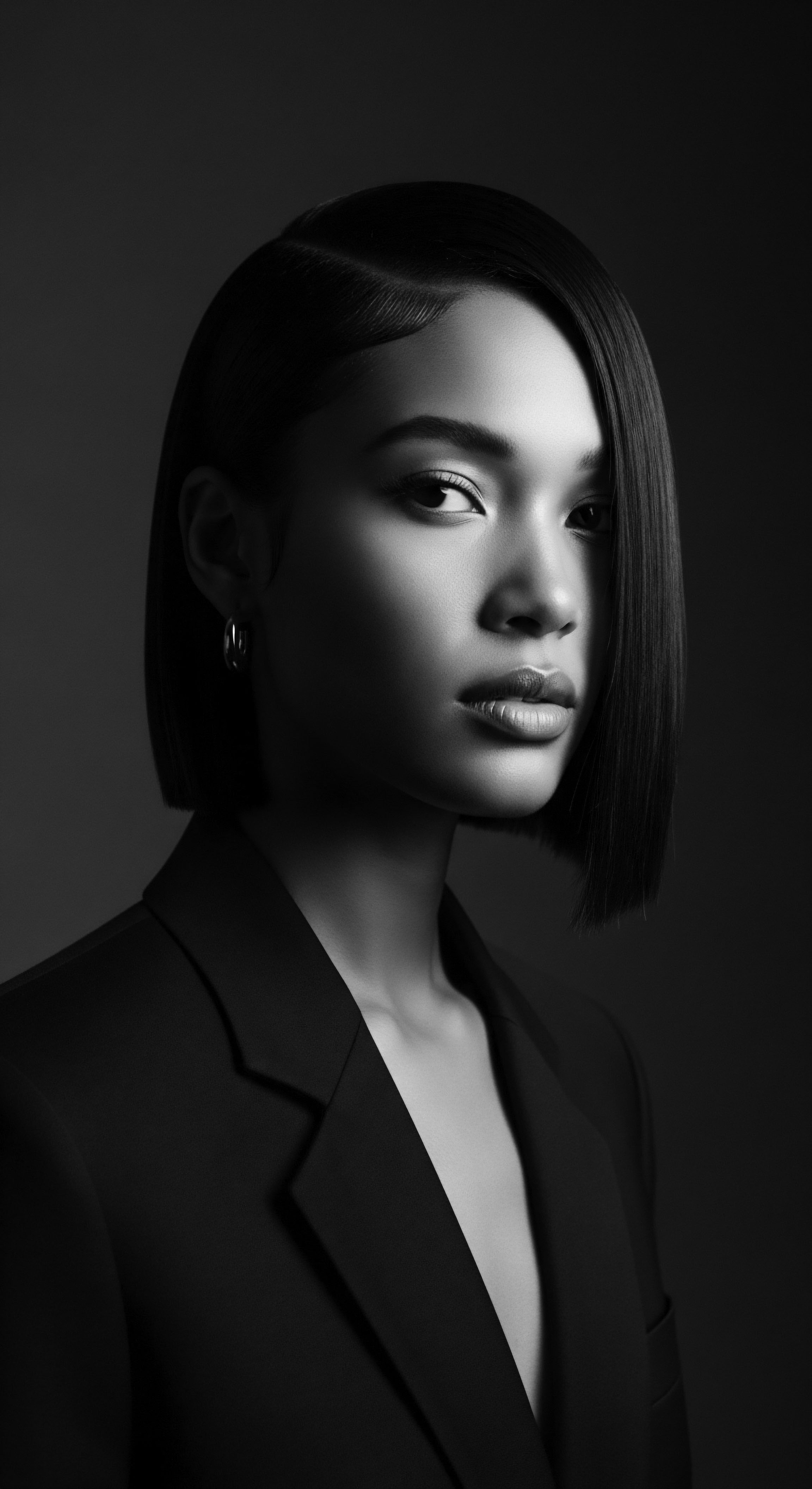
Relay
The legacy of textured hair care, passed down through generations, represents a vast repository of intuitive knowledge and lived experience. It is a continuous exchange, a relay race of wisdom from elder to youth, from tradition to innovation, all grounded in the fundamental understanding of this unique hair type. This inherited wisdom, particularly concerning holistic wellness and problem-solving, informs a comprehensive approach to hair health that transcends superficial remedies. It teaches us that true radiance stems from a balanced connection between internal well-being, mindful external practices, and a deep respect for our personal helix.

Building Regimens from Ancestral Blueprints
Modern personalized hair regimens, while often incorporating scientific advancements, often mirror the holistic approach cultivated by ancestral communities. For instance, the practice of a pre-shampoo oil treatment, now understood scientifically for its ability to reduce hygral fatigue and protect the hair shaft during cleansing, finds its parallel in age-old African rituals where rich oils and butters were applied to hair and scalp days before washing. These were not random acts; they were intentional steps within a structured care routine designed to preserve moisture and maintain elasticity. The ancestral blueprint emphasized consistency, gentleness, and the use of natural, locally sourced ingredients, principles that remain foundational for healthy textured hair today.
Consider the deep conditioning ritual, a contemporary staple. Its roots stretch back to communities utilizing natural masques made from fruits, clays, and plant extracts. The mucilage from okra, the conditioning properties of baobab seed oil, or the cleansing attributes of rhassoul clay were understood and applied with precision.
These ingredients, revered for their efficacy, speak to a profound, empirical knowledge of nature’s bounty. The systematic application of these elements to cleanse, strengthen, and soften hair was not merely cosmetic; it was a part of a broader wellness philosophy that intertwined self-care with natural cycles and available resources.
The enduring wisdom of ancestral hair care practices provides a holistic framework for modern regimens, validating the power of traditional ingredients and mindful rituals.

How do Nightly Rituals Connect to Historical Protective Measures?
The nighttime sanctuary for textured hair, often involving bonnets, scarves, or specialized pillowcases, is a direct descendant of historical protective measures. Historically, head coverings were not solely for adornment or religious observance; they served a crucial practical purpose ❉ safeguarding hair from environmental aggressors, preserving intricate styles, and preventing moisture loss during sleep. In many African cultures, headwraps indicated social status, marital state, or spiritual devotion, yet beneath their symbolic facade, they also protected delicate braids and twists, ensuring their longevity and the health of the hair.
The modern satin or silk bonnet, a ubiquitous tool for textured hair care, functions precisely in this ancestral spirit. It minimizes friction against rough fabrics like cotton, which can strip hair of its natural oils and lead to tangles, frizz, and breakage. This simple act of covering the hair at night, a seemingly minor step, carries the weight of centuries of ingenuity dedicated to preserving the integrity of textured strands. It is a daily reinforcement of a deep respect for the hair’s vulnerability and a proactive stance towards its longevity.
- Shea Butter ❉ As explored previously, its widespread traditional use for protection against sun and dryness.
- Coconut Oil ❉ A staple in many coastal communities for its deep penetration and conditioning benefits, reducing protein loss.
- Neem Oil ❉ Revered in Ayurvedic traditions (which intersected with African practices) for its antifungal and antibacterial properties, beneficial for scalp health.
- Castor Oil ❉ Particularly important in various African and Caribbean cultures for stimulating growth and strengthening hair, especially for edges and thicker strands.
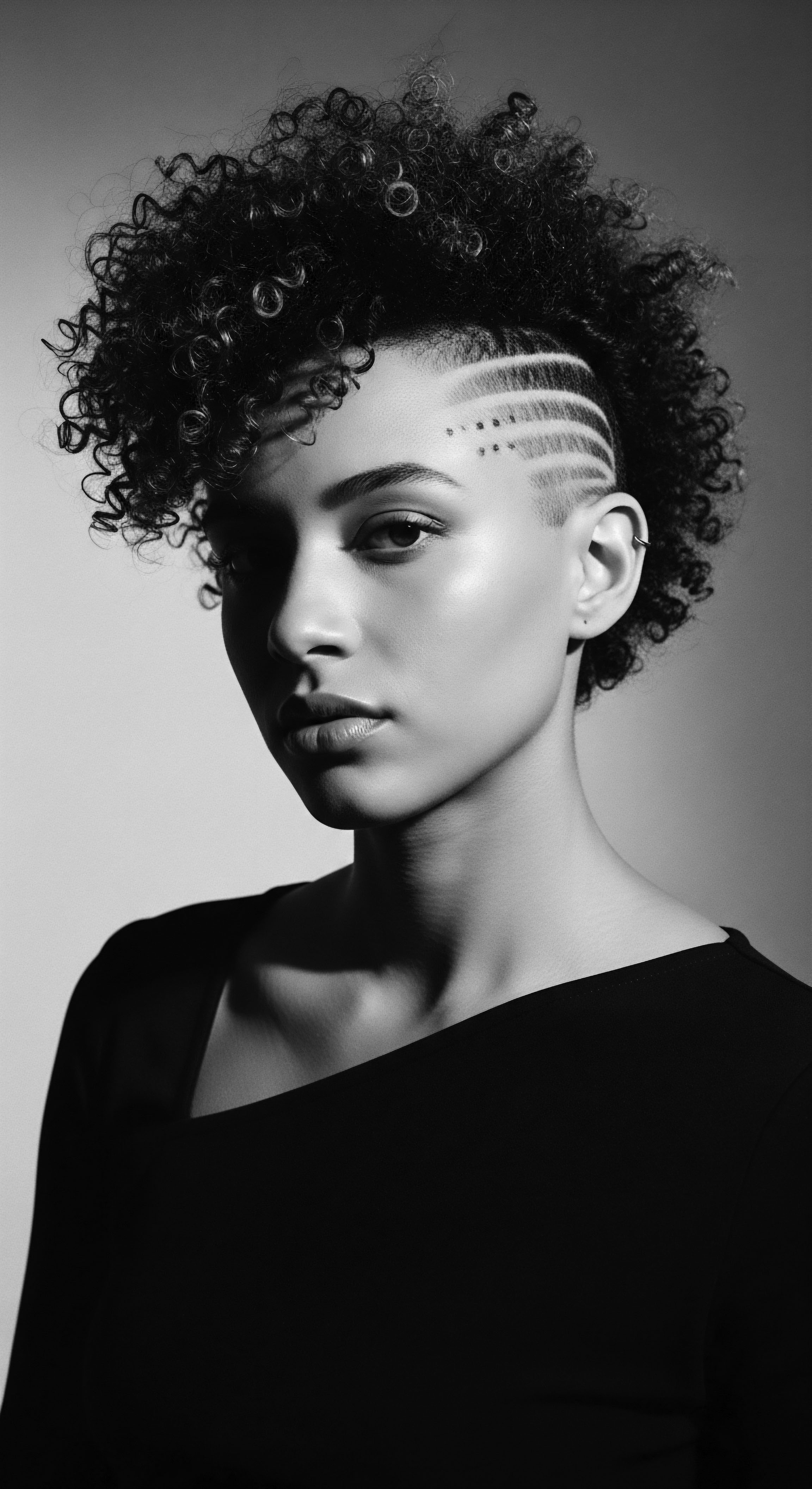
Problem Solving and Holistic Influences
Addressing common textured hair concerns—dryness, breakage, tangling, scalp conditions—has always involved a multi-pronged approach, whether in ancestral times or today. Traditional problem-solving often began with an internal assessment ❉ Were there dietary deficiencies? Was there emotional stress impacting overall well-being? This holistic perspective recognized the interconnectedness of body, spirit, and even community health, viewing hair as a barometer for internal balance.
For example, specific herbal infusions, taken internally, might be prescribed for hair thinning, alongside topical applications. This wisdom contrasts with a purely symptomatic approach to hair health.
Consider the persistent challenge of dryness. Ancestrally, beyond regular oiling, communities often employed water-rich plant ingredients. The juice of succulent plants, or the steam from herbal decoctions, was used to hydrate. This aligns with modern understanding that water is the ultimate moisturizer for hair.
Furthermore, traditional practices for detangling, often involving fingers or wide-tooth tools and plenty of slip from plant-based conditioners, minimized the breakage that dry, tangled hair is prone to. These were not quick fixes, but patient, methodical approaches born from deep understanding.
The continuity of care philosophies is evident. The principle of working with the hair’s natural inclinations, rather than against them, remains a cornerstone. This means understanding the unique curl pattern of each individual, acknowledging its needs for moisture and gentle handling, and celebrating its versatility. The goal of ancestral hair care was not necessarily to conform to external standards, but to cultivate strength, vitality, and health, allowing the hair to thrive in its authentic state.
This emphasis on intrinsic well-being, rather than imposed perfection, serves as a powerful source of empowerment in contemporary contexts, allowing individuals to define beauty on their own terms, rooted in their inherited legacy. The quiet persistence of textured hair, the stories it holds, and the resilience it embodies, serve as a constant reminder of enduring heritage.
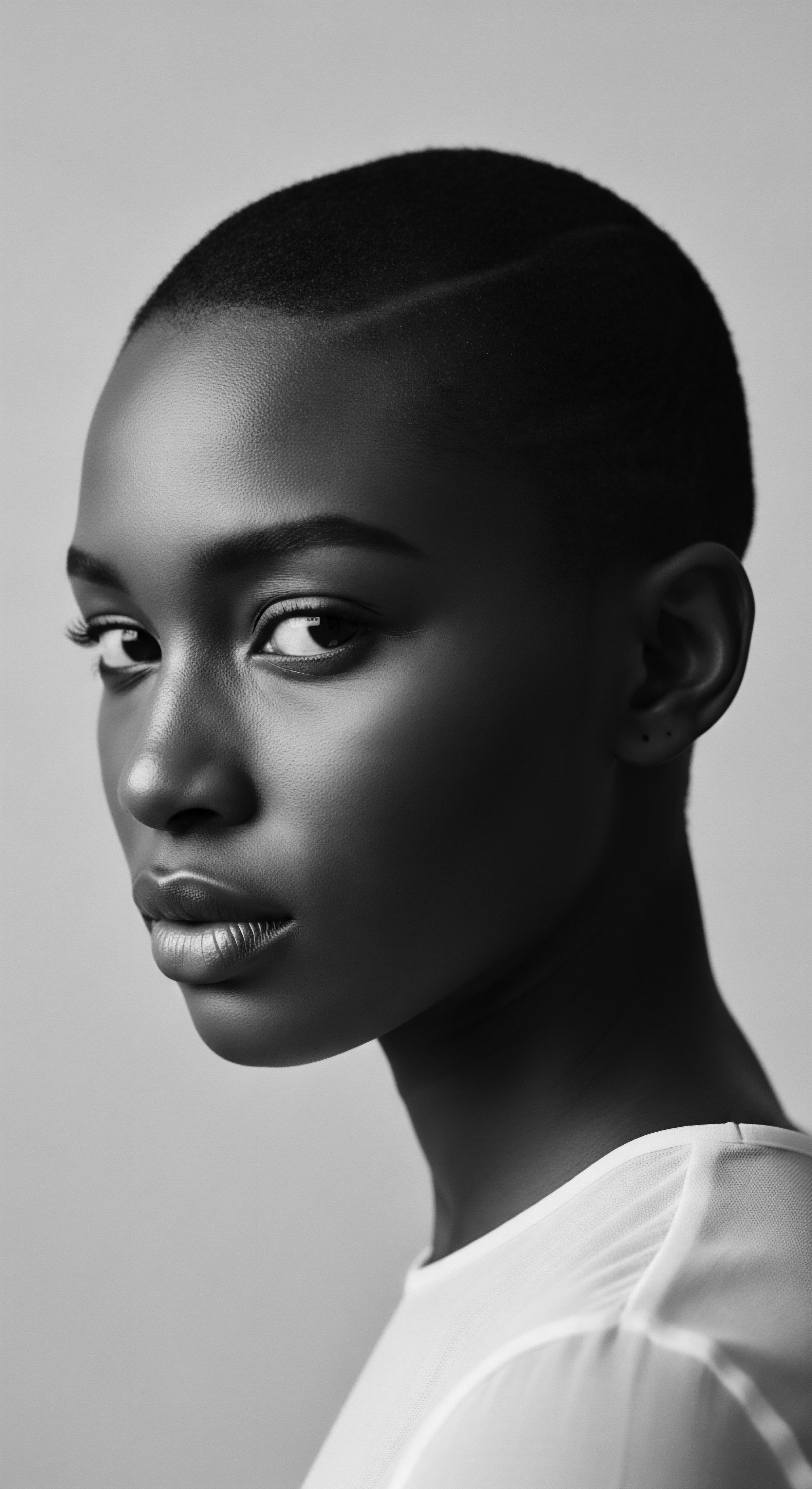
Reflection
The strands that grace our crowns are more than mere protein structures; they are living archives, imbued with the echoes of ancient drumbeats, the resilience of journeys across oceans, and the whispers of ancestral voices. Textured hair, in its diverse expressions, stands as an unmistakable source of personal affirmation and a profound, active connection to an inherited legacy. It defies singular definitions, instead inviting us to witness a rich spectrum of human experience, identity, and ingenuity. From the earliest communal braiding rituals, where stories were literally woven into protective styles, to the clandestine maps for freedom etched into cornrows during eras of immense oppression, hair has consistently served as a powerful medium for survival and self-expression.
Each coil and wave tells a story of adaptation, of enduring grace, and of beauty reclaimed against external pressures. The journey of understanding and caring for textured hair is, at its essence, a pilgrimage back to fundamental wisdom—a recognition of the natural world’s remedies, the body’s innate rhythms, and the deep, abiding strength of a people. It calls us to listen to the whisper of the past, to honor the hands that tended these strands through time, and to carry forward a legacy of reverence.
This shared heritage is not static; it is a living, breathing current that shapes our present and guides our future. When we cleanse, condition, or style our textured hair, we are not simply performing a routine; we are engaging in an act of remembrance, a re-connection to a narrative that is both deeply personal and universally resonant. The “Soul of a Strand” thus represents this enduring spirit ❉ the wisdom, the resilience, and the unbound beauty of textured hair, a timeless testament to connection across all generations.
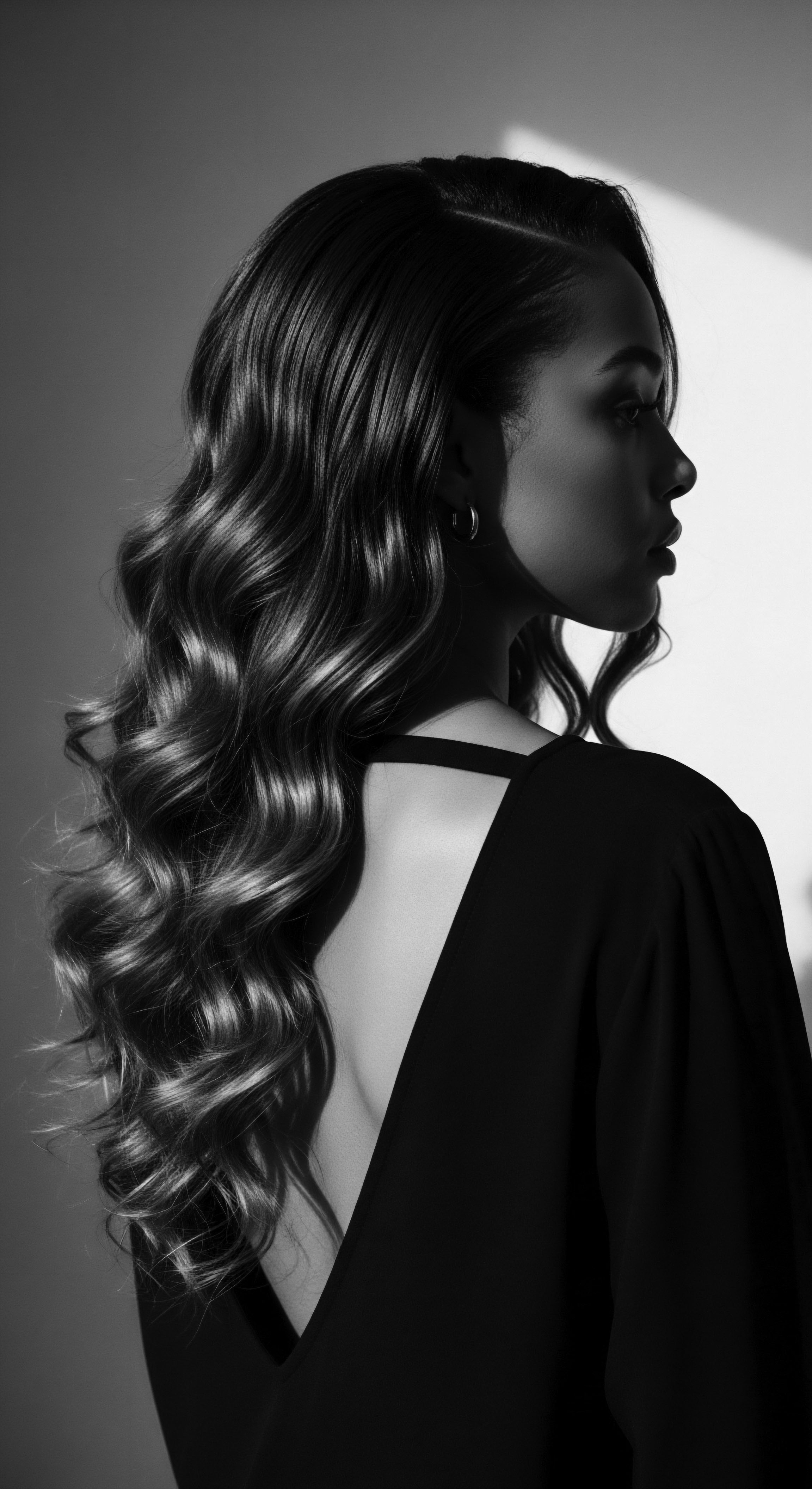
References
- Meadows, Jordan. (2025). How Cornrows May Have Helped Free Slaves Navigate. The Carolinian Newspaper.
- Renteln, Alison Dundes. (2005). The Cultural Defense. Oxford University Press.
- Dash, Paul. (2006). Black hair culture, politics and change. International Journal of Inclusive Education.
- Okoro, Nkiru. (2009). African Hair ❉ Its History, Symbolism, and Cultural Significance. Xlibris Corporation.
- Patton, Tracey. (2006). African-American Hair as a Communicative Practice. Howard Journal of Communications.
